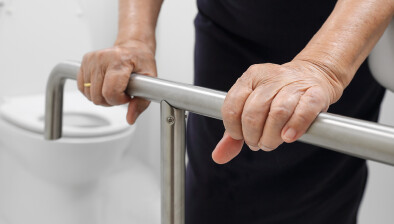ISPA report warns of accessible homes crisis

Thousands of Scots are living in homes unsuitable for their needs, according to a new report carried out by academics from the University of Stirling’s Intersectional Stigma of Place-Based Ageing project (ISPA).
The ‘What’s Next For Adaptations’ report, which analyses demand in Scotland for home adaptations such as stairlifts, grabrails and wet rooms, has said the system for accessing these adaptations is too complex, underfunded and is often inconsistent.
As well as the devastating impact this has on people living in unsuitable accommodation, the research has revealed that policy failure around adaptations is putting significant strain on the NHS.
The report said that older and disabled people who were unable to access required adaptations were more prone to falls and injuries in their homes.
It added that Scotland is also lacking a single accountable body to oversee the adaptations process and collect relevant data. Access to adaptations not only differs depending on where applicants live, but also whether they own their home, rent privately, or from a social landlord.
Noting that the solutions are clear but underfunded, or not put in place, the Scottish Government has been urged by researchers and housing bodies to increase the budget for adaptations and create a tailored approach.
The calls come from the Scottish Federation of Housing Associations (SFHA), the Chartered Institute for Housing Scotland (CIH Scotland) and the Association of Local Authority Chief Housing Officers (ALACHO), who commissioned the research in association with ISPA and the University of Stirling.
It comes amid warnings that Scotland’s healthy life expectancy is declining, whilst the population of those aged over 60 is set to exceed 1.7million by 2035.
SFHA Chief Executive Sally Thomas said: “This crucial research shines a light on the complex and unfair process people go through everyday just to access vital adaptations which help them live well and for longer in their home.
“The current adaptations system is unfit for our ageing population and places too much emphasis on whether someone rents or owns their home, where they live, and what funding they can access instead of people’s needs.
“Housing associations are at the forefront of helping people live well and for longer in their homes and already support tenants by installing everything from grabrails and stairlifts, to larger-scale adaptations such as wet rooms.
“However, the system not only needs more funding, but also to be simplified so everyone can access the adaptations they need irrespective of where they live and whether they rent or own their home.”
Professor Vikki McCall, from the University of Stirling, who led the ISPA research, said: “While our population is living longer, that doesn’t mean we are living well. With costs rising for housing adaptations - estimates are that Scotland is likely to spend more than £76 million a year on adaptations by 2040 - it is clear that changes are needed, and urgently. All our research points to the need for future-proofing of Scotland’s housing stock, early intervention, and age-friendly, inclusive designs.”
Ashley Campbell, policy and practice manager at CIH Scotland, said: “This new research adds to a significant and growing body of work on what’s needed to improve the adaptations system in Scotland.
“The message is clear – we know that investing in adaptations saves money for health and social care partners and improves people’s lives. But this isn’t just about the funding, the system can be complex, time consuming and inconsistent. We need the Scottish Government to fulfil its commitment to review the adaptations system and remove barriers to accessing support.”
Listen to Professor Vikki McCall and the SFHA’s policy manager Susie Fitton discuss the report on today’s episode of the Scottish Housing News Podcast.








